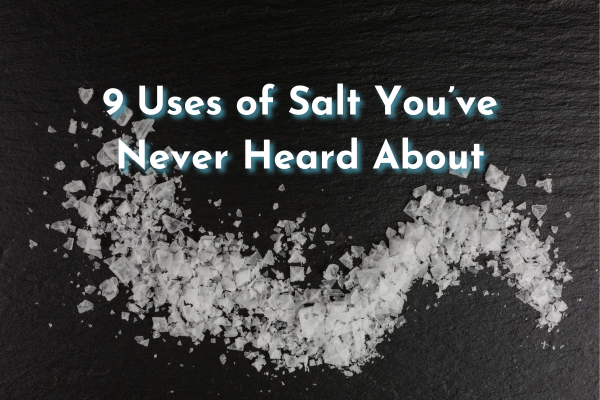December 11, 2024
December 11, 2024

The twinkling lights, the crunch of snow underfoot, and the chill in the air—there’s nothing quite like a white Christmas to set the holiday mood. But while snowy landscapes look magical from the comfort of a cozy living room, they’re a different story for those tasked with clearing roads and walkways. Behind the scenes of our holiday wonderland, one unsung hero makes snowy streets safe: salt.
Salt isn’t just for seasoning your holiday feast. When sprinkled on icy surfaces, it plays a pivotal role in melting snow and preventing ice from forming. But how exactly does salt work its winter magic? To understand, we need to dive into the science.
The Science of Melting Ice with Salt
Ice forms when water molecules slow down in cold temperatures and arrange themselves into a solid crystalline structure. For pure water, this happens at 32°F (0°C). Salt, when introduced to this icy environment, disrupts this freezing process in a phenomenon called freezing point depression.
Here’s how it works: Salt dissolves into its constituent ions when it comes into contact with water. Sodium chloride (NaCl), the most commonly used salt, breaks apart into positively charged sodium ions (Na⁺) and negatively charged chloride ions (Cl⁻). These ions interfere with the ability of water molecules to bond together and form the rigid structure of ice.
By lowering the freezing point of water, salt ensures that ice doesn’t form until the temperature drops well below 32°F. This is why salted roads often stay wet and slushy even in freezing weather. The extent of freezing point depression depends on the concentration of salt and the type of salt used. For example, calcium chloride (CaCl₂) is even more effective than sodium chloride because it releases three ions per molecule, further lowering the freezing point.
Salt in Action During Winter
When snow falls on a road treated with salt, it meets this ion-packed environment and starts melting almost immediately. But salt isn’t just for melting existing ice—it also prevents more ice from forming, creating a briny barrier between the pavement and new snowfall. This is why many municipalities pre-treat roads before storms with a salt brine solution.
However, salt’s effectiveness diminishes in extremely cold temperatures. Below about 15°F (-9°C), sodium chloride struggles to do its job, which is why other salty compounds like calcium chloride or magnesium chloride are often used in harsher climates.
A Wintry Balance
While salt is indispensable in winter road management, it’s not without drawbacks. The use of salt does pose environmental risks as salt runoff can harm lakes, streams, rivers, and groundwater tables. Responsible and sustainable salting and appropriate storage practices can reduce this risk. Balancing safety with environmental impact is a challenge, and the use of the 3Ps of Sustainable Salting can help mitigate the risks while keeping the public safe and the economy open.
As you sip hot cocoa and gaze out at the sparkling snow this Christmas, spare a thought for the chemistry that keeps your world moving in winter. Salt may lack the glamour of holiday decorations, but its role in ensuring safe travels during the most wonderful time of the year is nothing short of miraculous.
May your days be merry and bright—and may your roads be clear and safe!

March 17, 2025

February 7, 2025